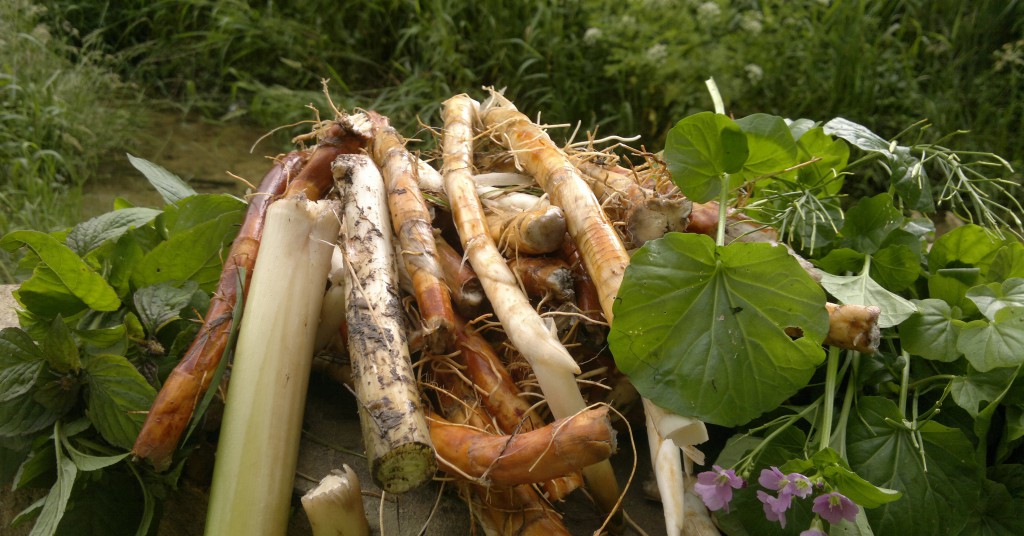Greater cuckoo flower – Identification, distribution, edibility
Cardamine raphanifolia
- Edibility – 4/5 – leaves and flowers
- Identification – 4/5 – 30-50cm tall, 4 petalled pink flowers, leaf stalks with 1-3 small paired oval lobes and one large kidney-shaped terminal lobe, all glossy and distinctly veined
- Distribution – 2/5 – Rare but widely dispersed throughout the UK in wet woodland, riverbanks and marshland. Possibly overlooked in some areas, but take care not to overharvest if you find it
- Season – All year, best in spring/summer
After first encountering this unusual and delicious brassica in the Scottish highlands, I was delighted to stumble on it again in my favourite bit of Galloway swamp – 10 minutes from my house. Foraging is a process of constant learning and though the four-petalled flowers and leaf structure instantly identified it as mustard family (brassicaceae), it took a fair bit of research and online pestering to finally pin it down.
It tastes rather like a sharper version of watercress, with a peppery, rocket-like kick. Young leaves in the spring have an echo of the horseradishy flavours of its relative the cuckoo flower (cardamine pratensis). It makes a truly excellent year-round salad green and can be cooked like watercress – though I think this is rather a waste of its fresh, crunchy succulence. As an accompaniment to steak or in sushi it is a fantastic addition to anyone’s wild larder.
Seek it out in wet woodlands and marshes alongside water mint, watercress, reedmace, pie cress, arsesmart and highly poisonous hemlock water-dropwort – which you should be familiar with before picking any wetland greens.





1 Comment
The leaves of this in your pictures look massive! Does it have a lot smaller leaves sometimes closer in size to watercress?